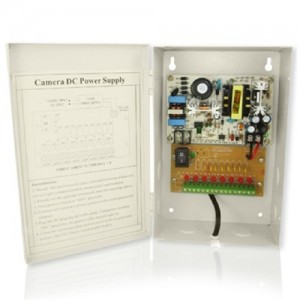 Many people are unaware of the security cameras power supply requirements. There are several different types of power supplies to meet the needs of the camera and accessory equipment. Most all digital video cameras run off a low-voltage power supply so there are not as many factors to be concerned about as there is if they used full household AC current.
Many people are unaware of the security cameras power supply requirements. There are several different types of power supplies to meet the needs of the camera and accessory equipment. Most all digital video cameras run off a low-voltage power supply so there are not as many factors to be concerned about as there is if they used full household AC current.
There are actually two major security cameras power supply. One power supply type produces AC current while the other produces DC current. Most cameras utilize either 24 Volts AC (VAC) or 12 Volts DC (VDC). There are some cameras that are designed to be used with either security camera power supply type. However, the power supplies are generally dedicated to one type of voltage or the other and not both. This means that a DC camera must have a DC security camera power supply. Likewise, an AC camera will only operate off an AC security camera power supply.
Why use two different types of power? For one thing, manufacturers make that decision when they create the camera. Also, if your system is going to include a very long run from the power supply to the camera, DC power will degrade over distance but AC won’t. Therefore, using AC power is not always a personal preference or choice but can be a requirement for your system.
Most of Security Camera King’s cameras operate on 12 VDC but there are many cameras in our on-line catalog that are dual voltage so they can utilize either type. As far as the camera goes Security Camera King offers two basic types of security camera power supplies.
The first type is a 4 channel output switching supply such as product# PWR-MINI-4. It basically the same thing as a plug-in transformer (sometimes referred to as an adapter) that has four power leads complete with connecting jacks. Some people prefer this type of security cameras power supply because it has a tendency to look sleek and small versus what could be construed as a “bulky” wall mounted power supply.
Which leads us to the second type of security cameras power supply, the multi channel Closed Circuit TeleVision (CCTV power distribution box). This power distribution box comes in 4, 8, 9, or 16 channel versions. One such example is product# PWR-4. The power supply normally is hard wired or plugged into normal house current. The power leads to each device are usually attached to screw terminals in the power distribution box.
There are benefits to using a power distribution box for the security cameras power supply. Power distribution boxes can be purchased with up to 16 channels or terminals for cameras and other devices. So instead of the mini unit which can only handle 4 devices at one time, all power sources are connected in one common spot (this good if you ever have to troubleshooting too).
Another interesting item, product# CV-24AC-12VDC is a voltage converter 24 VAC to 12 VDC at 1.5 A. Since AC power can be run further than DC without as much degradation, you can use this adapter to run AC power to the camera and then convert it into 12 VDC. This is also helpful when using thin gauged wires also.
Remember when designing and purchasing your system that there are more components that require power besides your camera. For those users that need systems that will be taking advantage of the InfraRed (IR) capability of a camera, you may also need an illuminator. An illuminator is an IR LED flood light that extends the nighttime range of the infrared function on your camera. Or you may want to use a powered microphone or other apparatuses that require power so make sure you purchase a power distribution box with enough available channels.
If you have any doubts or questions about what type and size power system you should use for your security cameras power supply, please contact one of our security experts. They can help you design a new system or improve and old one at no extra cost! You can contact them through Live Chat or by telephone at 866-573-8878 Monday through Friday at 866-573-8878 from 9AM to 6 PM EST.
